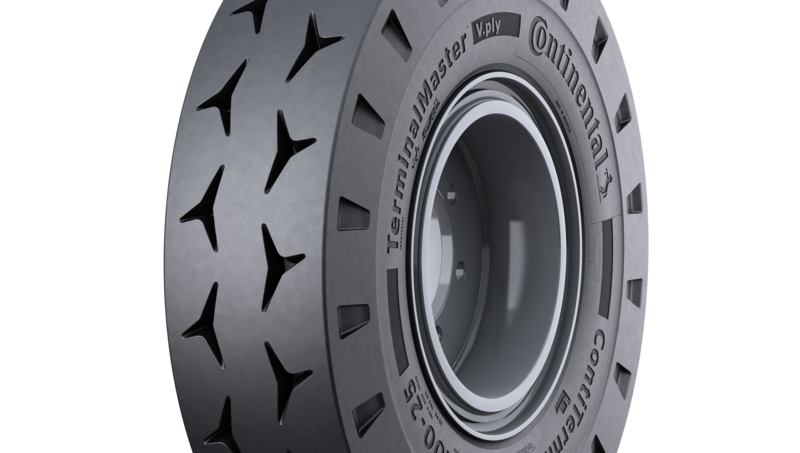TerminalMaster V.ply: Continental renames port tires
- Continental renames the StraddleMaster+ port tire to TerminalMaster V.ply
- Recommendation for application is broadened to airports and industry
Hanover, September 16, 2020. Continental is changing the name of the StraddleMaster+ port tire to TerminalMaster V.ply. The decision is accompanied by a significant expansion of the tire's application recommendations: Up to now, the tire was primarily designed for the use on straddle carriers in the port. In intensive tests in the laboratory and in real-life use at the customer's premises, the tire has also been recommended for use at airports and for heavy-duty transport in the industrial sector. With the TerminalMaster V.ply, all areas of application are now united under the new name.
TerminalMaster V.ply: Extensive portfolio for special requirements
Whether in harbors, airports or in the industrial sector: the requirements for vehicle tires are diverse. Speed, distance, load, temperature, ground conditions and many other factors characterize their applications and challenges. AGVs, aircraft tractors and side loaders often have to drive short distances at low speed. They are therefore exposed to heavy loads when turning frequently on the spot. The TerminalMaster V.ply is designed to provide good traction, even in case of emergency braking. In addition, the tire is characterized by reinforced sidewalls and the resulting durability, which results in lower operating costs due to less downtime. The closed shoulder ensures precise track holding on almost any surface and in all weather conditions. The innovative tread design and the resulting low vibration makes TerminalMaster V.ply particularly suitable for driverless vehicles - it offers low rolling resistance, enables precise steering and has a long service life thanks to the V.ply technology.
Stability thanks to V.ply technology
While cross-ply tires are known for their damping properties and radial tires for good high-speed capability, V.ply technology combines the advantages of both technologies by integrating a weave pattern of different cords at specific angles. The carcass of a V.ply tire consists of up to 20 layers of diagonal fibers embedded in three wire cores. Since steel cord does not allow an optimal bond between carcass and rubber shell, V.ply technology uses a high-strength polymer. Unlike conventional cross-ply tires, the crossing textile layers of a V.ply tire are arranged at an angle of about 30 degrees. Together with the sidewall layers, this provides increased tire stiffness and enables a higher level of stability and durability during sudden movements.
The increased resistance to damage, for example impact on immovable objects such as curbs or containers, has a positive effect on the life of the tires. V.ply tires therefore offer the best performance for short distances and low speeds under heavy loads.

Julia Reinhold
Communications Manager Commercial Specialty Tires
Specialty Tires
Continental Tires
- +49 511 938-2570

